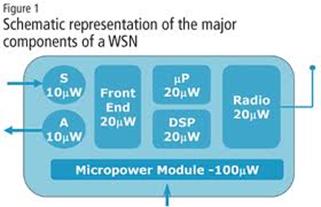

|
Code Size Matters Did you know that processors have become about 1 million times more powerful since the first one was created? This is thanks to Moore’s Law telling us that the semiconductor industry would double performance every 18 months because they could make the features smaller and smaller. But did that make the applications like your laptop 1 million times as faster or more powerful? No, it didn’t. Why? Because memory technology couldn’t keep up. Software became bigger every day. This means that the CPU is kept waiting for the memory before it can put it in its cache. This also means that that more energy is needed. Hence, code size still matters. Less gives more performance and requires less energy.
|
|
Ultra Low Power Processing
|




|
Wearable or even bio-implanted electronics are increasingly assisting our human sensor system. At the heart is often a small chip that senses the environment, amplifies the signal and feeds it to one or more small on-chip processors. The more processing performance available, the smarter we can make these devices. But, the limiting factors are today no longer size, but power requirements and heat dissipation. Small code matters and can make the difference between having a laboratory demonstrator and a real product on the market. |
